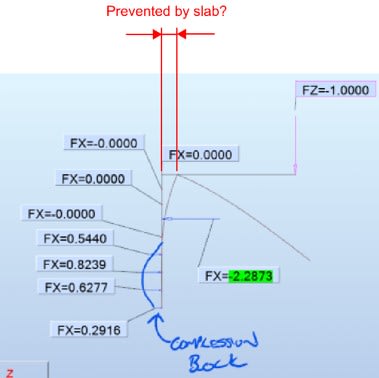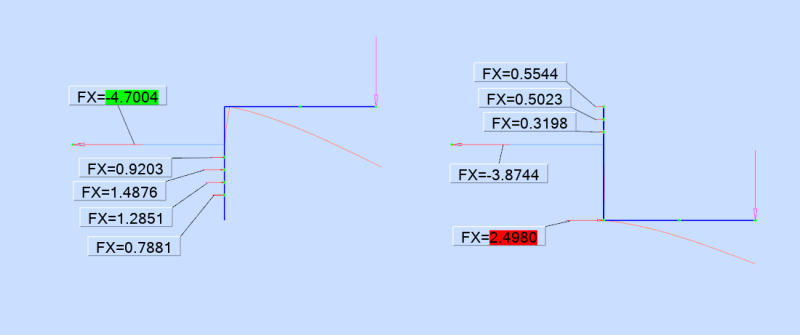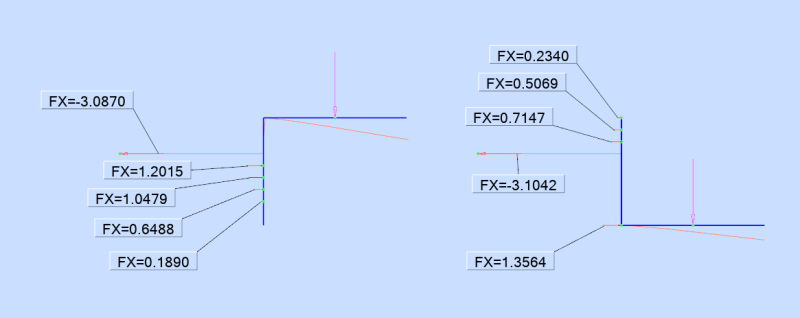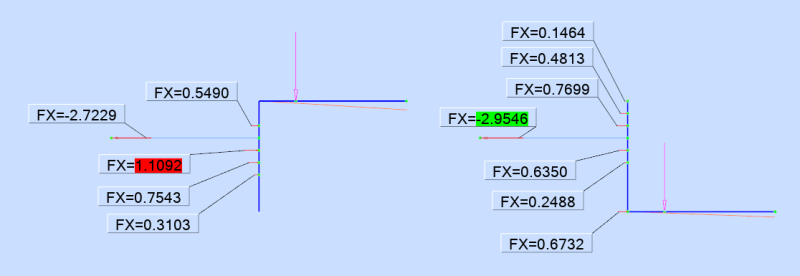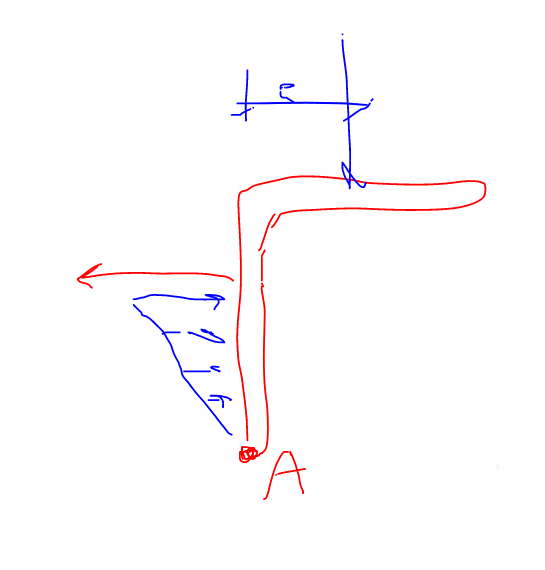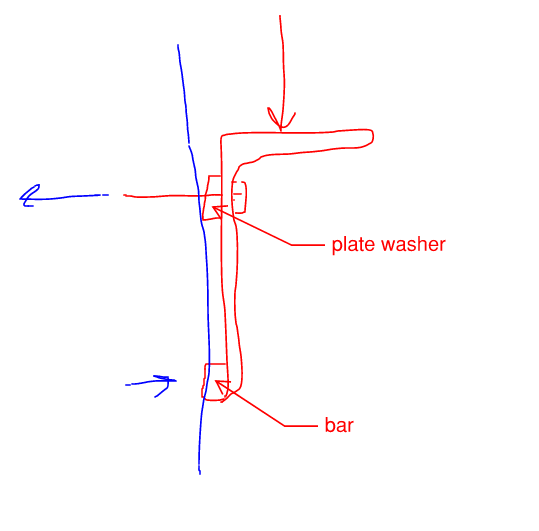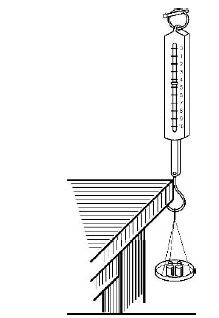1davek said:
Why isn't it like sketch #2 below.
Firstly, it's not like that because of the prying action as mentioned above. That model simply isn't true or universally conservative in most cases.
Secondly it's not like that because one can assume a classic, rectangular stress block at the end of the angle if -- and only if -- the anchor would yield in a ductile fashion before busting out of the concrete. Sometimes that's achievable but, often, it is not.
1davek said:
Why do we assume it to be a triangle.
What is the supporting document that allows this assumption.
The triangle has been traditionally thought to do an adequately conservative job of capturing the prying effect that shows up in Celt's models because:
1) If the bolt is in tension, then surely the neutral axis of the compression block is not higher than the elevation of the bolt.
2) The bolt will always stretch a bit as will the bond/anchorage between the bolt and the concrete, particularly when creep is considered. This means that a gap will form behind the bolt ([unless pre-load - creep] prevents that) and the neutral axis is actually somewhat below the bolt.
3) Folks would typically design the angle leg per your model #2 and limit the flexural stress in that leg to the elastic limit rather than the plastic one. This was an indirect, and imperfect, way to try to make the angle leg "rigid" such that it would be consistent with the triangular stress assumption.
4) Expedience. As interesting as Celt's modelling is, I still don't feel that it's applicable to practical design situations. There are a lot of things about the modelling that will be imperfect in ways that mirror modelling issues with soil springs:
a) What is the appropriate concrete spring stiffness for various member thicknesses? Should it be high/low bracketed? By how much?
b) How is the transition between loaded and unloaded springs handled?
c) What about concrete compression creep?
d) What about gap formation behind the bolt?
e) What about anchorage creep?
f) What about bolt stretch?
g) What about preload?
...
And even if all of that is resolved adequately, you're still stuck with a moving target of a situation that is subject to change when your angle size and thickness change.
The triangular assumption is a well intentioned attempt to create a practical design method from what is really a wildly complex and uncertain design problem.
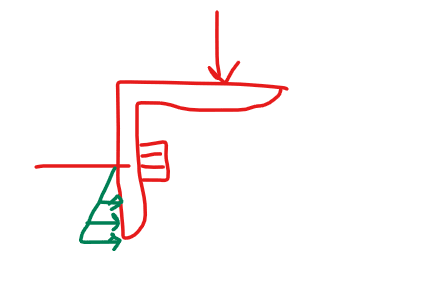
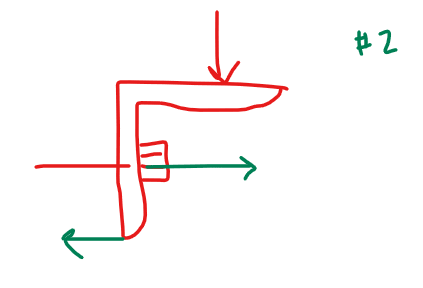



![[bigsmile] [bigsmile] [bigsmile]](/data/assets/smilies/bigsmile.gif)
